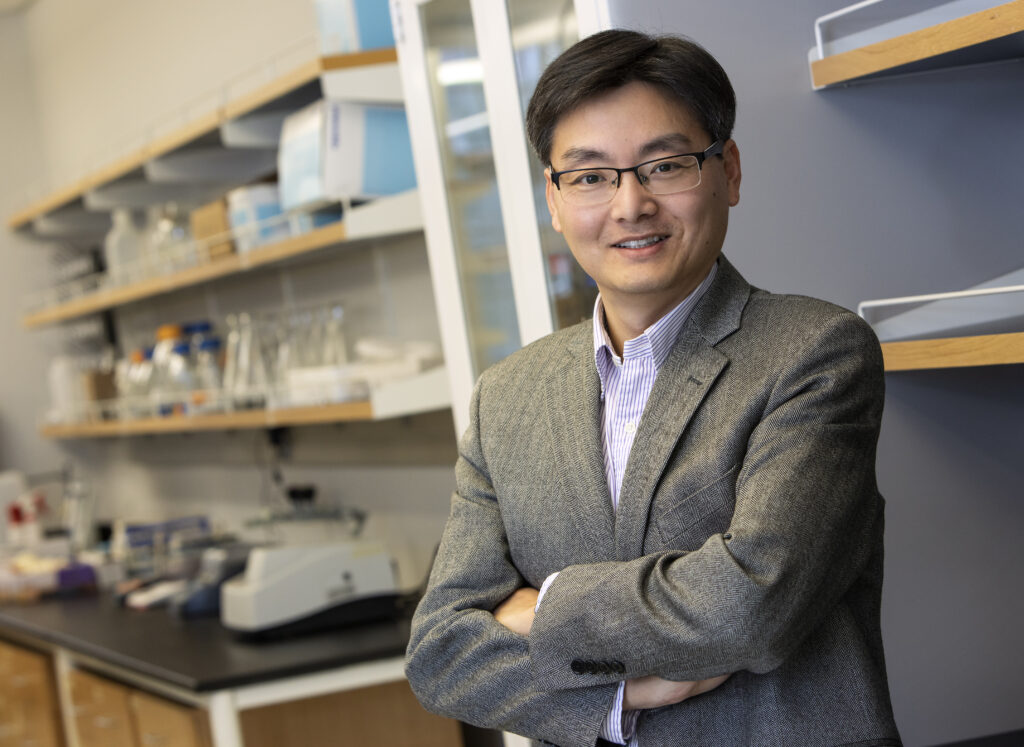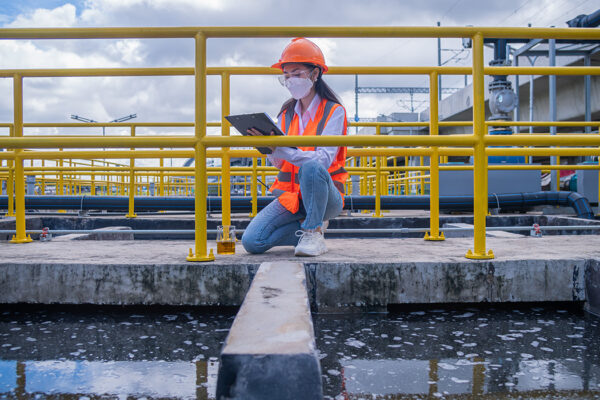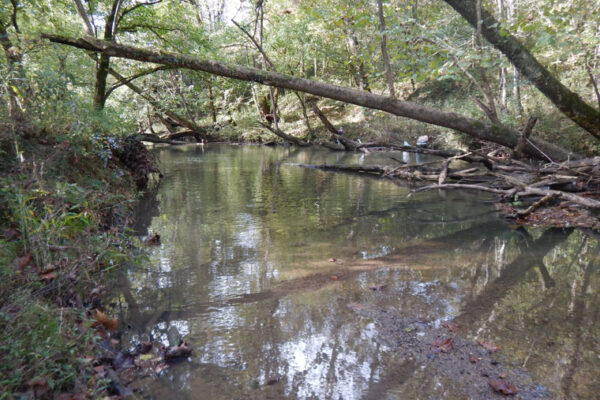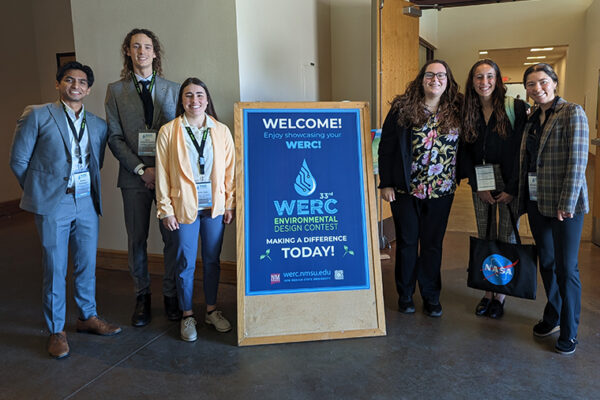One of humankind’s most precious fertilizers is slipping away.
Phosphorus, which today comes mostly from nonrenewable reserves of phosphate rock, typically winds up in municipal waste streams. In the best cases, wastewater treatment plants sequester about 90% of that phosphorus in “sludge” and decompose that sludge into something known as digestate. Engineers hope to establish a more sustainable cycle for reusing phosphorus, but toxic compounds in digestate limit the possibility of recycling it as fertilizer — it’s hard to recover phosphorus from solid waste like digestate.

“Existing phosphorus recovery technologies mostly target the liquid,” said Zhen (Jason) He, the Laura & William Jens Professor in the Department of Energy, Environmental & Chemical Engineering at the McKelvey School of Engineering at Washington University in St. Louis. “Sludge contains a lot more phosphorus compared to the liquid. How can we recover that?”
His lab develops technologies to recapture resources like phosphorus from wastewater. Recently, the team explored using electrochemical devices — the fundamental system at work inside batteries — to split water molecules and pull solid, usable phosphorus out from digestate. It was the first effort to simultaneously remove and recover phosphorus from solid municipal waste without adding chemicals. And it met its goal with surprising efficiency.
“Phosphorus is a compound of high interest because it’s a limited resource,” He said. “You can potentially save a lot of money.”
The team, which also included doctoral candidate Zixuan Wang and undergraduate Daran Anand, published details of their experiment online June 26 in Environmental Science & Technology.
In a separate review paper published earlier this year, He, Wang and Fubin Liu, another doctoral student in the lab, analyzed the ways in which electrochemical devices could remove phosphorus. This “leaching” occurs when an electrical current flowing through the anode side of an electrode acidifies a slurry surrounding it.
But leaching alone doesn’t solve the broader problem: “For removal, you spend a lot of time and money and eventually you still dump it,” He said. “Can we recover it instead?” He noticed an opportunity to combine removal and recovery in one electrochemical device.
The idea was to have two chambers that operate at different pH. Sludge enters the anode chamber, in which current separates phosphate into liquid solution. The team transferred the phosphorus-rich liquid to the less acidic cathode chamber. And here, free-floating phosphates, calcium and iron from the original sludge should combine into whitish solids that precipitate to the bottom.
To test their prototype, He’s team obtained real digestate from the Missouri River Wastewater Treatment Plant in St. Louis. After tinkering with the electrical current, they identified conditions where the device leached phosphorus with over 93% efficiency and precipitated approximately 99% of it into solid form. Over 42 cycles, the device averaged nearly 80% efficiency in recovering phosphorus.
The beauty, to He, is that the energy powering removal at the anode is the same energy powering recovery at the cathode; a simple membrane isolates the chambers’ unique environments. “It’s one electron moving from one side to the other side, it’s the same amount of electricity to do two jobs,” he said.
Usually, wastewater sludge is 93% to 99% water — expensive excess weight. That alone makes the team’s device a major step up over existing operations, which also often contain toxic heavy metals and pathogens.
“You’ve got a solid. That makes things easier to transport,” He said.
The harvestable end-products have a phosphorus content on par with high-grade phosphate rock. “You can either apply directly, or you can use them as a feedstock to produce fertilizer,” He said. The solids could feasibly feed directly into existing industrial operations designed to turn phosphate rock into fertilizer.
Now, He imagines taking this beyond the lab bench.
“Going from here to pilot scale to the full scale, that is going to involve a lot of engineering,” He said, adding that energy consumption will likely be the biggest hurdle.
Still, He is optimistic enough that he expects more applications than just treating human waste, thanks to a resource that’s readily available.
“In the Midwest, there’s a lot of cow manure and swine waste. So there’s a lot of nutrients out there,” He said. “I really see this going beyond municipal wastewater.”
Wang Z, Anand D, He Z. Phosphorus Recovery from Whole Digestate through Electrochemical Leaching and Precipitation. Environmental Science & Technology, published online June 26, 2023. https://doi.org/10.1021/acs.est.3c02843
Wang Z, Liu F, He Z Electrochemical phosphorus release and recovery from wastewater sludge: A review, Critical Reviews in Environmental Science and Technology, Feb. 6, 2023, DOI: 10.1080/10643389.2023.2172928
This work was supported by Washington University in St. Louis. Originally published by the McKelvey School of Engineering.


